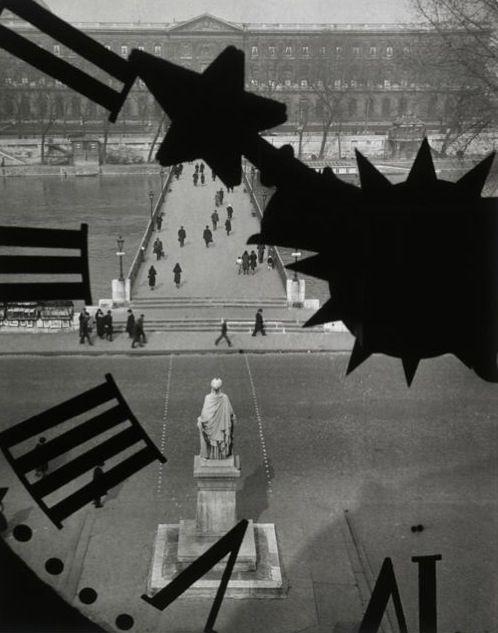One day, quite some time ago, I happened on a photograph of the Pont des Arts taken by Kertész in 1929. Taken from inside the clock of the Institut de France, it is one of Kertész’s most visually striking photographs. At first, the viewer sees the inverted clock-face and is drawn to conclude that the great theme of the photo is Time itself. Comfortable though this position may be, it has the unfortunate drawback of being not only platitudinous, but also incorrect. If we look deeper, as Kertész demands, we notice that the action of the photo takes place on the bridge, beyond the clock-face. It is as if Kertész is telling us that in order to comprehend the significance of this photo, we must look beyond the strictures of Time as understood as a x-axis moving from left to right – from past, through present, towards the future.
Instead, Kertész instructs us to view the bridge as it has moved backwards and forwards through time, through the prism of events that occurred before and possibly even after the photograph was taken. The deeper I looked into this photograph, the clearer it became to me that the solution to its mystery lay elsewhere. “A photograph is only a fragment,” writes Sontag, “and with the passage of time its moorings come unstuck. It drifts away into a soft abstract pastness, open to any kind of reading (or matching to other photographs).” The time had come for me to set out on my journey into the night.
